Terre di Frontiera involves a collaborative investigation to tell the story of the Ghetto la Felandina (Bernalda) and the exploitation of migrants labour in Basilicata from the point of view of migrant workers and activists.
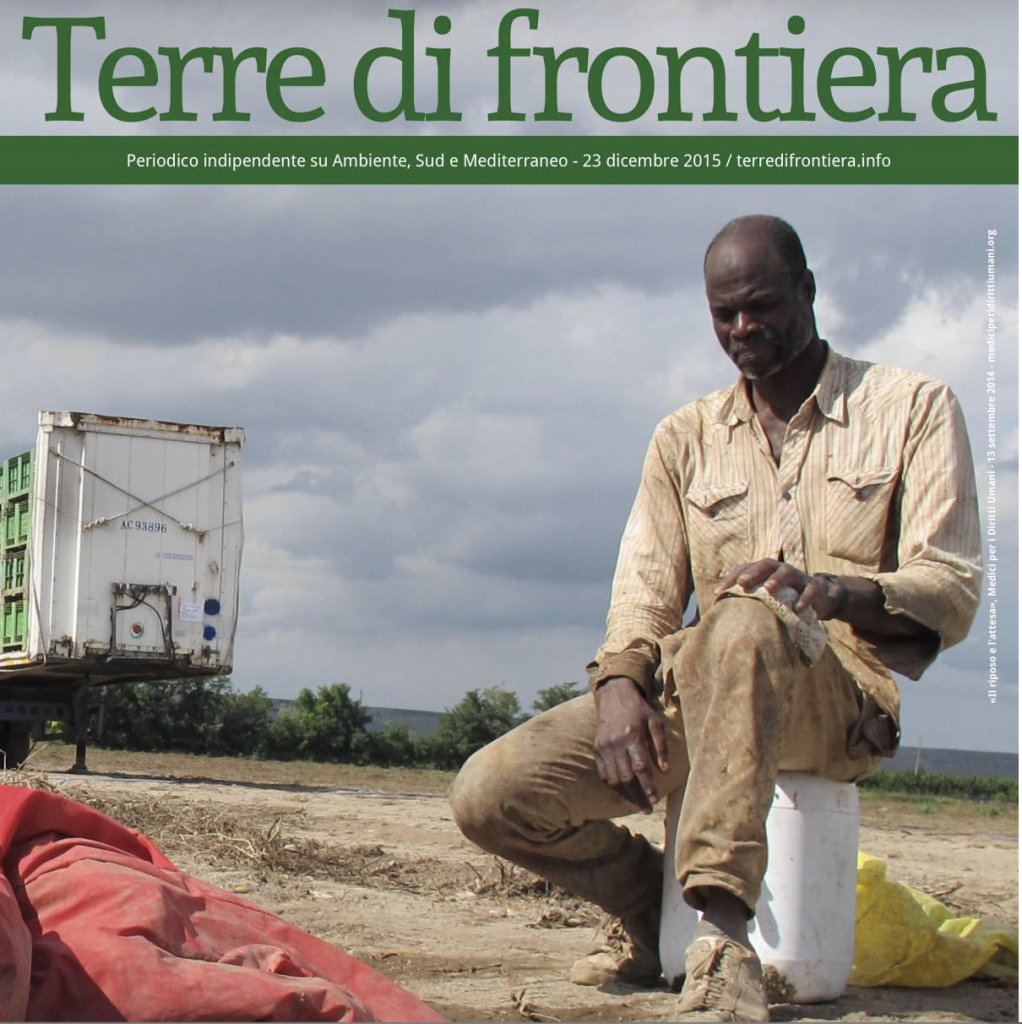

Terre di Frontiera involves a collaborative investigation to tell the story of the Ghetto la Felandina (Bernalda) and the exploitation of migrants labour in Basilicata from the point of view of migrant workers and activists.

Another tragedy has affected African labourers in Italy’s plains this month. On 6 March, bulldozers demolished the San Ferdinando workers’ ghetto, located in the centre of Calabria’s orange plantations and Calabria’s Ndrangheta organized crime stronghold. The ghetto, which has claimed the lives of three people over the last year, had become a thorn in the eye of Italy’s Interior Minister, Matteo Salvini, who has ordered the erection of a tent camp as well as a restoration of public order in the area.
In 2011 the research team Bitter Oranges recorded living conditions in San Ferdinando in this video.

The eviction of San Ferdinando (close to Rosarno, which has been termed one of Italy’s new slavery sites) forms part of Italy’s interior minister’s promise to move “from words to actions.” Matteo Salvini is also the head of the right populist League party, whose members are currently establishing an institutional alliance with the European Far Right. Since his election he has repeatedly declared his intention to “raze to the ground” Italy’s shantytowns, including Rom and refugee settlements. Over the last year, more than a dozen such camps have been demolished, including the Baobab Experience in Rome, which hosted over hundreds of refugees and asylum seekers, as well as various Sinti and Rom settlements around Turin, Pisa and the Italian capital.
The official motivation for the eviction has been one of insecurity and a lack human dignity. But the Caritas settlement does not appears to offer much of an alternative. On 22 March, another person died in its tent camp situated only a few meters away from the old ghetto. The victim’s name is Sylla Nouma, a man in his thirties. “We hoped not to deplore situations like this any more,” the mayor Andrea Tripodi declared to the press. “It was an unexpected tragedy,” Vincenzo Alampi, the local Caritas director added. Although the causes of the fire are still be ascertained, a possible reason might have been a short circuit departing form the electric wires located in the corner of the tent.
The government-directed evictions, which Matteo Salvini systematically calls “appointments with legality”, particularly appear to target precarious workers’ settlements located in the heart of Southern Italy’s vegetable and fruit plantations nowadays. After the forced eviction of Rignano Garganico and Boreano last year (both situated in the tomato districts of Foggia and the Alto Bradano), the bulldozers have started moving to the South now. Last May local authorities destroyed the informal labour settlement of Campobello di Mazara, in Sicily –leaving workers no choice but to occupy new buildings: while 128 inhabitants were haphazardly hosted in a camp managed by the Red Cross, others have started to erect smaller settlements in the periphery of neighbouring Castelveltrano, in the heart of Sicily’s olive plantations. A similar fate now awaits San Ferdinando’s settlers. At the time of the eviction, the local prefect estimated the number of slum residents at 1.592 people, according to the Repubblica newspaper. While 200 were immediately transferred to official migrant reception centres, around 900 found temporary accommodation a new tent camp managed by Caritas. Local authorities have announced 30 housing units to accommodate future migrants coming to the area. But the mayor has repeatedly warned against housing migrants without also providing for local residents in this area stricken by poverty and criminality. In the meantime, the Interior Ministry has promised 350.000 euro’s to “restore liveability” in the area of San Ferdinando.
The official motivation for the eviction has been one of insecurity and a lack human dignity. But the Caritas settlement does not appears to offer much of an alternative. On 22 March, another person died in its tent camp situated only a few meters away from the old ghetto. The victim’s name is Sylla Nouma, a man in his thirties. “We hoped not to deplore situations like this any more,” the mayor Andrea Tripodi declared to the press. “It was an unexpected tragedy,” Vincenzo Alampi, the local Caritas director added. Although the causes of the fire are still be ascertained, a possible reason might have been a short circuit departing form the electric wires located in the corner of the tent.
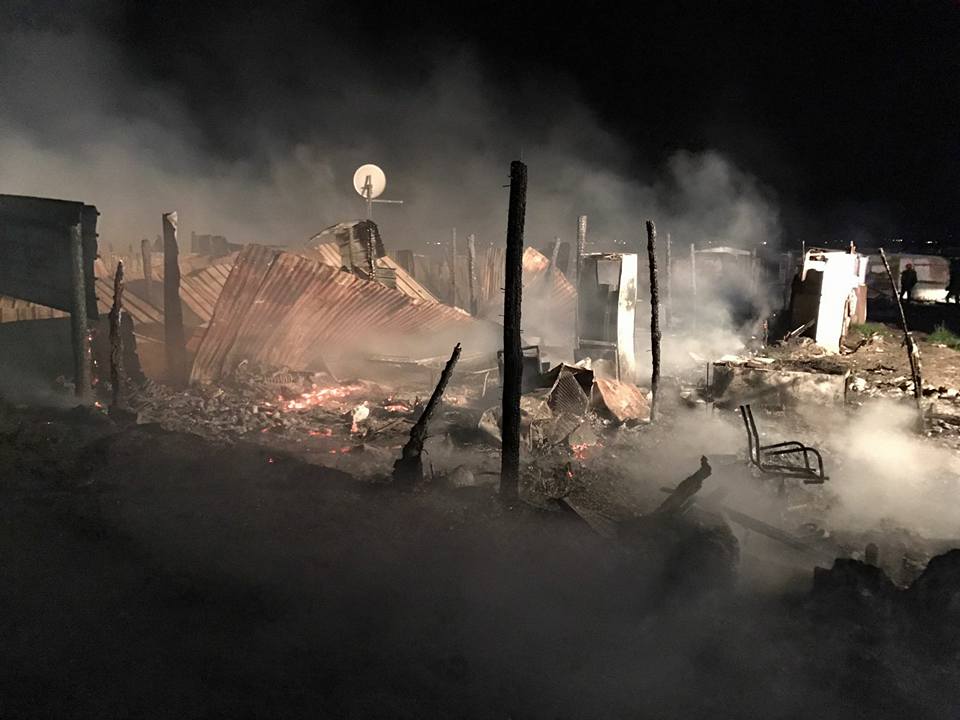
Because of pervasive uncertainty and a lack of consideration by official policies, more and more migrants now have started to move to other vegetable and fruit plantations in the area. Last month, some West African migrants already found refuge in a previous industrial plant in the plains of Metaponto, in neighbouring Basilicata, where the strawberry harvest is currently happening at full speed. Local associations are currently assisting the squatters with social and health services in the absence of official lodging facilities. Most likely, the slum will experience the same fate in a couple of months, when strawberries will have been picked, and the tomato planting season will begin once again in Foggia and Basilicata.
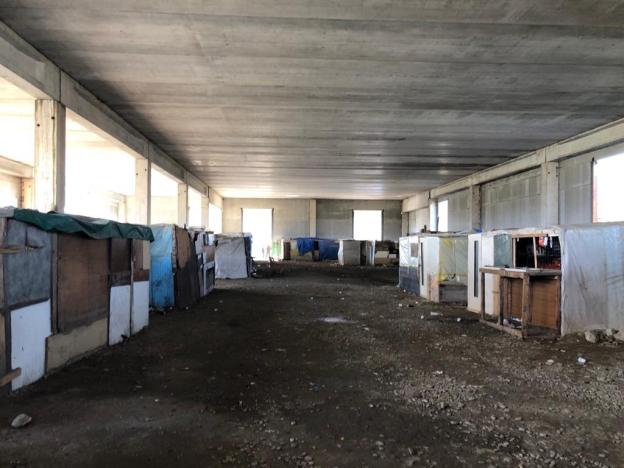
A consortium of associations led by the Coalition for Freedom and Civil Rights (CLID), the Association for Juridical Studies on Immigration (ASGI), and Indiewatch confirms earlier findings about the systematic abuse against migrants, including children, at two locations in Sicily and Potenza that were mentioned in a previous post: Lampedusa and Palazzo San Gervasio. The report (English summary here) says migrants and asylum seekers at the two sites have been victims of human rights violations and the right to defence, as well as inhumane living conditions and violence. Specifically referring to Palazzo, ASGI notes what it calls “very serious violations of the right to defence, which impeded the migrants from being assisted by their attorneys during the confirmation hearings.” In the meantime, an attempted escape by 22 detainees from the detention center yesterday has resulted in a mass search operation by the police, resulting in the arrest fr 12 of them. Human rights organisations are worried about the increasing repression of those who remain internalised. A complete report (in Italian) about the joint visit by Campagna LasciateCIEntrare and Osservatorio Migranti Basilicata, together with Europarlamentarian Eleonora Forenza has been made available here.
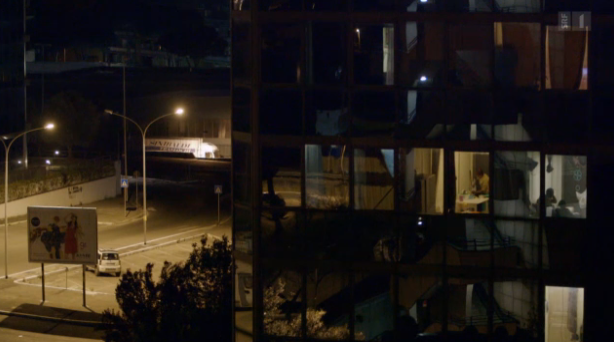 For the next 23 days still, Swiss television is showing a documentary on Palazzo Salaam –the occupied former University building in the southeastern Roman periphery that has recently been threatened with closure by the Renzi government.
For the next 23 days still, Swiss television is showing a documentary on Palazzo Salaam –the occupied former University building in the southeastern Roman periphery that has recently been threatened with closure by the Renzi government.
In Italy, quite a number of occupied buildings I previously indicated – inspired by Heather Merrill – as ‘black spaces’ (the shelters, detention centres, condemned urban buildings, and other locations representing those who, by virtue of their asylum status and association with African territories, are rendered non-citizens, even though they are an integral part of modern Western societies and the economies that sustain them) are currently threatened with eviction.
In Turin, the occupants of exMOI, 750 refugees from 26 different African countries (apparently including 15% are women and 30 children) have been ordered to pack and leave. During their March last Saturday, they carried huge banners depicting their Black mediterranean presence.
In Rome, the occupants of Palazzo Salaam (an estimated 1.200 refugees and beneficiaries of humanitarian protection, mostly from the African Horn) loose their residence permit as a result of the new housing legislation proposed by the Matteo Renzi government.
In Bologna, 200 families occupying exTELECOM, a building opposite the new city council, are threatened with eviction.
Given the chronic shortage of places to host refugees and asylum seekers across the country, UNHCR and Medici per i Diritti Umani, a medical charity, estimate, thousands of asylum seekers and beneficiaries of international protection are living in precarious housing conditions. For example in Turin, a local migrant association estimates that around 600 refugees and people benefiting from a humanitarian protection status live across 7 occupied buildings in the city. Considering other such ‘black places’ in Bologna, Rome, and Florence in this calculation, the numbers easily add up. This number does not even include the homeless refugees whom, as one Malian who fled to Germany explained, are sleeping under the bridges of Italy’s metropoles.
The paradox lies precisely in the new housing legislation (or ‘piano casa’) that was voted in 2014 but is being put into practice only recently. Article 5 of this plan says: “Whoever occupies a property illegally without title cannot apply for a residence nor for a connection to public services in relation to this property, and [by consequence] all acts in violation of this prohibition shall be declared null in front of the law.” The converted law (voted in March 2014) is even more severe: “Those who illegally occupy residential public housing cannot participate in the procedures fro obtaining housing for five years following the ascertained date of the illegal occupation.”
Besides the curious liaison between residential property and public space in this legislative measure (residential public housing), the concrete application of it means that whomever occupies a building of black of better alternatives, can be denied official residency. This poses a source of anxiety particularly for the refugees and asylum seekers whom since the Nord Africa Emergency of 2012-2013 have been thrown out in the streets for a lack of assistance by the (theoretically) protecting state.
The comment by Antonio Mugolo, president of Avvocati di Strada, an association that takes up the defence of homeless people in Italy, is telling in this respect: “Without residence,” reminds Mumolo, “you cannot vote, you cannot cure yourself, you cannot receive a pension nor benefit from local welfare, you cannot obtain formal employment, you are not entitled to legal assistance … [In short] taking away the residence permit from people who occupy a building literally means placing those people outside of society, making them invisible, erasing in one single shot the possibility to confront their difficulties… It is remarkable that a plan, which should help families to confront the crisis, precisely bears these consequences,” he concludes.
Somehow this situation reminded me of the inherent violence expressed in the term state territory. So whereas, on the one hand, as Stuart Elden would say, territory is a political technology to measure land and control terrain, territory is also the effect, the product of spatially fixing relational networks into this bounded space. Close to Michael Watts‘ and David Delaney‘s reading, the legislative measures I briefly illustrated above indeed illustrate the consciously violent (or ‘terrorising’?) work of territory, which, besides its calculative techniques, of marking, bordering and categorizing political space, also involves the material imposition of sovereign political power through such fixed spatial units. Citizens and non-citizens alike thus find themselves frequently caught in the deadlock of territory as it provides no alternative space for making a life and developing a livelihood outside of its constraining perimeters. With sometimes paradoxical results.
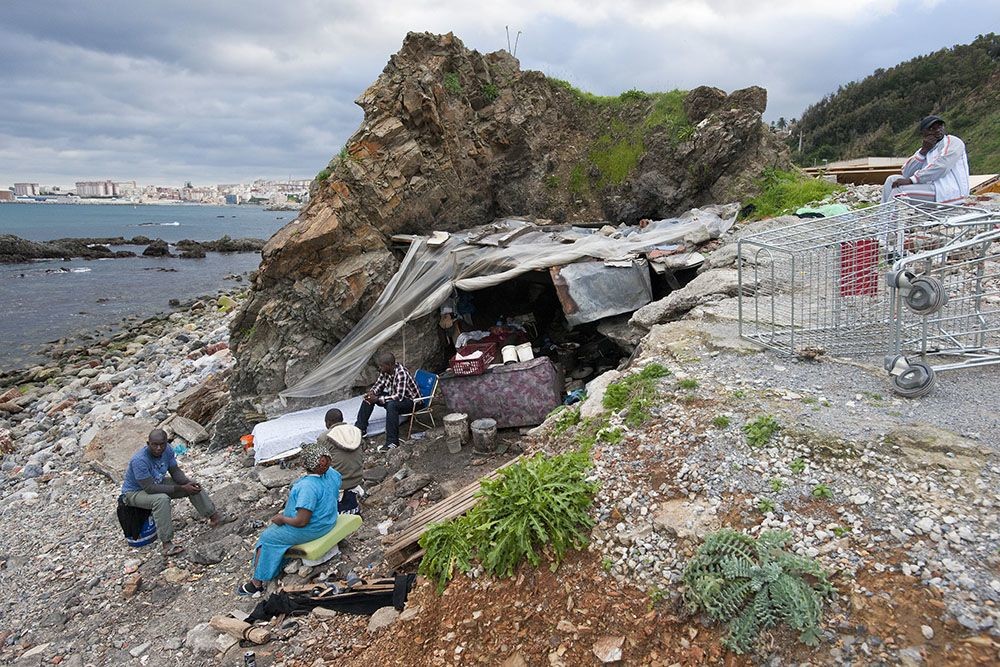
courtesy Nick Hannes
After the suspended lives of Berlin and Milan (see previous post), this time a call arises from the more secluded spaces of Europe’s asylum system, as hundreds of people are on hunger strike in over half of the UK’s immigration detention centres – the biggest uprising against Britain’s racist detention system for a decade. Two blogs record their detained voices on this worldpress site and on this Facebook page. They are calling for solidarity protest and international support.
.
Society and Space just published a marvelous virtual theme issue on international migration, with contributions from Rutvica Andrijasevic and William Walters, Deirdre Conlon and my former colleague Susan Thieme, amongst others.
The collection adds further depth to the ongoing discussion in critical legal geography on the complex and expanding spaces of the law, expressed for example in a recent collection edited by Irus Braverman and others. These authors draw in turn on a long-standing scholarship of legal anthropologists like the Von Benda Beckmanns, Boaventura Santos, legal geographers like Nicholas Blomley and David Delaney, and legal scholars like Zoe Pearson and Oren Yiftachel.
In the guest editorial of Society and Space, called ‘the where of asylum’, Mustafa Dikeç asks the pugnant question:
Parallel to Irus Braverman and colleagues, Dikeç addresses this question not merely from a practical legal perspective (how law is shaped) but out of a profound curiosity into power’s spatial constitution, as John Allen would put it.
What animates this growing body of work, Dikeç writes, is the idea that law may be involved in producing spaces of lawlessness. In other words: violence that is commonly depicted as ‘lawless’ may actually be committed through the law –or rather: through the continuous reproduction of its exception. It is this latter strand that seems to be the main concern of contemporary legal-spatial research.
Dikeç’s question came to mind lately when watching a series of recent Italian documentaries on the expanding migrant ‘ghettos’ in Puglia, Campania and Basilicata (the issue is generating worldwide attention nowadays, some day I need to produce a list of recent contributions). Set up as labour camps for the numerous seasonal land labourers (or braccianti) who invigorate South Italy’s plantation economy, these ‘ghetto’s’ reflect the extremely violent and exploitative forms of encampment capitalist labour regimes engender across international borders today (not to speak about the strong semantic resonance of the term). But they also express how the law (particularly asylum law) consciously creates it own exception, which is henceforth placed outside of its protective realm.
In other words, the conscious abandonment of protection as a fundamental value of state sovereignty within the EU’s national state frameworks is not just made possible through the systematic prevention of access to its territory, or the official detention of migrants across Europe’s many camp sites. But it is also justified through the reproduction of these liminal environments, which simultaneously constitute the law’s outer-space – or frontier zone – and the inner space of cross-border capitalist undertakings. Reflecting on Europe’s schizophrenic hospitality, Andreas Oberprantacher writes:
Somebody who has been working on the transformation of the state’s legal space theoretically more recently is David Delaney. In his recent book, Nomospheric Investigations, he tries to overcome the discrepancy between the legal and the spatial as two autonomous realms. The nomosphere is the cultural-material environment that emerges out of the performative engagements through which the social signification of the ‘legal’ and the legal signification of the ‘social’ materialize and mutually constitute one another. At the same time Delaney makes it plain that nomic settings, like the home, the archive, or the workplace, do not exist in isolation from one another. But they are the contingent products of pervasive cultural processes associated with the nomosphere (he uses the term nomoscapes). His work feels reminiscent of feminist scholarship about the location of knowledge (I think of Donna Harraway and Bell Hooks for example) as well as some of the more recent critical scholarship on borders (of which the Society and Space theme issue is just one recent outcome) I look forward to engage more in-depth with.